The Three Kingdoms of Ancient Egypt
Archaeologists divide the ancient Egyptian timeline into three distinct categories, the Old Kingdom, the Middle Kingdom, and the New Kingdom. Each kingdom has its own specific time period as well as pharaohs, constructions, and culture. The time periods between the kingdoms were known as Intermediate Periods.
There were three kingdoms, as well as three intermediate periods in the history ancient Egypt.
The Old Kingdom
Time Period
The Old Kingdom lasted from 2686 B.C. to 2181 B.C. It included the 3rd through the 6th dynasty.
First Pharaoh
The first pharaoh of the Old Kingdom was Djoser, who ruled Egypt from 2630-2611 B.C. He was responsible for the construction of one of the very first pyramids ever built by the ancient Egyptians. His “step” pyramid at Saqqara started the Egyptian tradition of constructing pyramids as burial places for pharaohs.
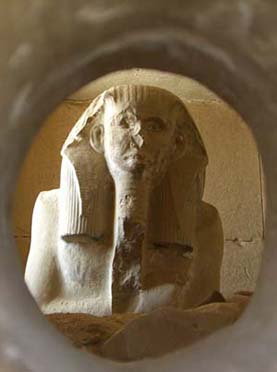
© Vincent Brown - Djoser's Ka Chamber
Dynasties/Rulers
Third Dynasty Rulers included:
- Sanakht
- Djoser
- Sekhemkhet
- Huni
Fourth Dynasty Rulers included:
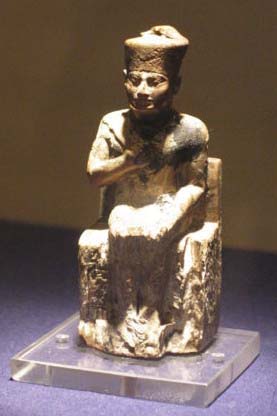
© JMCC1 - Statue of Khufu
Fifth Dynasty Rulers included:
- Userkaf
- Sahura
- Neferirkara Kakai
- Shepseskara Isi
- Raneferef
- Nyuserra
- Menkauhor
- Djedkara Isesi
- Unas
Sixth Dynasty Rulers included:
- Teti
- Userkara
- Pepy I
- Merenra
- Pepy II
- Nitiqret
Construction and Tombs
- During the Old Kingdom, the Great Pyramids of Giza and the Sphinx were constructed due to a long-standing peaceful period.
- This time period was known as the “Age of Pyramids”.
- Snefru converted The Pyramid of Meidum, originally a step pyramid, into a smooth sided pyramid we recognize today. He also built the Bent Pyramid at Dahshur.
- The 5th dynasty brought about pyramids that were smaller and less substantial than those from the 4th dynasty, however, carvings in the mortuary temples during the 5th dynasty were of extremely high-quality.
- The last important monument built during the Old Kingdom was the Pyramid of Pepi II at Saqqara.
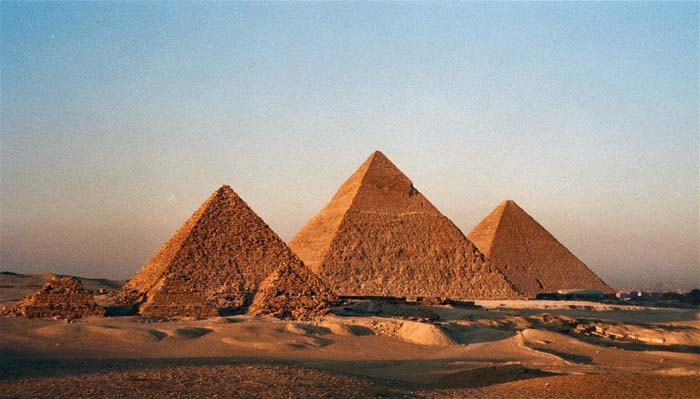
© Bruno Girin - The pyramids of Khufu, Khafre and Menkaure
Religion
- The Pharaoh, as well as the people of Egypt, offered allegiance to Re, the sun and creator god. The pharaoh performed rituals so that the Nile would continue to flood, which was the lifeblood of Egypt.
- The Pharaoh, or king, was the most important figurehead in ancient Egypt. He owned the land and ruled all of the people of Egypt. He also served as Head Priest and commander-in-chief of the Egyptian army.
- In the Old Kingdom, only the Pharaoh was believed to have an afterlife.
Culture
- Women were highly respected in the Old Kingdom. They owned land and passed it down to their daughters. A pharaoh could only become king after marrying the previous king’s daughter.
- Despite popular belief, the pyramids were not built by slaves, but by laborers who willingly worked on the structures.
- Only priests wrote because it was considered sacred. It was believed that writing a person’s name gave them more power. Speaking the pharaoh’s name was strictly forbidden.
- Pyramids were built on the west side of the Nile where the sun set so the Pharaoh could more easily meet with Re in the afterlife.
- The capital city of the Old Kingdom was Memphis.
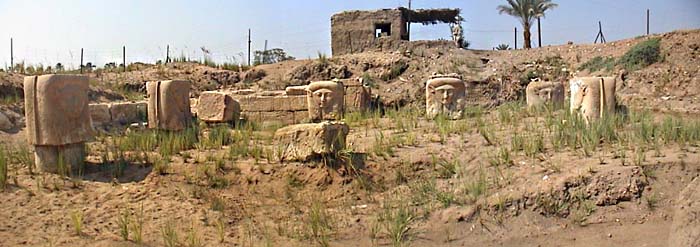
Ruins of the Temple of Hathor at Memphis
The Middle Kingdom
Time Period
The Middle Kingdom lasted from 2055 B.C. to 1650 B.C. and included the 11th and 13th dynasty.
First Pharaoh
Mentuhotep II is credited with being the founder of the Middle Kingdom. He ruled from Thebes after defeating the 10th dynasty rulers who controlled Lower Egypt, and re-unified the country.
Dynasty/Rulers
11th Dynasty Rulers:
- Mentuhotem I
- Intef I
- Intef II
- Intef III
- Mentuhotep II
- Mentuhotep III
- Mentuhotep IV
12th Dynasty Rulers:
- Amenemhet I
- Sesostris I
- Amenemhet II
- Sesostris II
- Sesostris III
- Amehemhet III
- Amenemhet IV
- Queen Sobeknefru
Construction & Tombs
- The first example of Middle Kingdom architecture is Mentuhotep’s mortuary complex. It was built against sheer cliffs in Thebes and featured a terraced temple with pillared porticoes.
- The pyramids of the Middle Kingdom weren’t as well-constructed as those in the Old Kingdom. Unfortunately there aren’t many Middle Kingdom pyramids that have survived.
- Amenemhat I’s funerary monument at El-Lisht was erected between Saqqara and Medium. It served as both residence and burial place of Senwosret I and Amenemhet I.
- Amenemhat III's Pyramid at Hawara.
- Sesostris II's pyramid at Illahun.
- Irrigation projects took place at Faiyum.
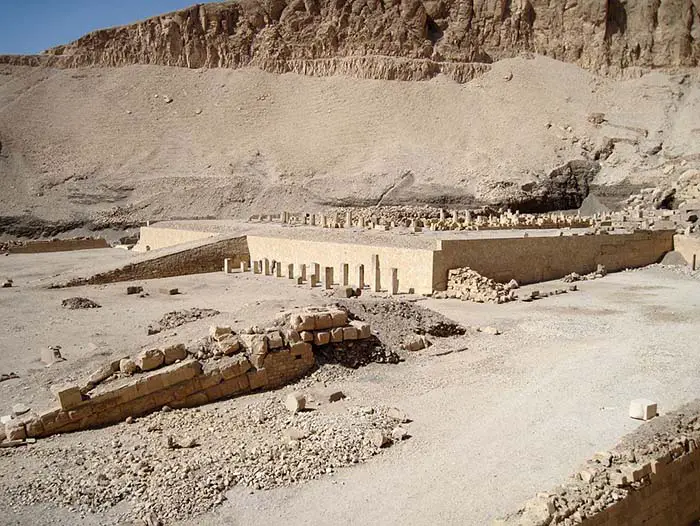
© Olaf Tausch - Mortuary Complex of Mentuhotep
Religion
- Priests and nobles gain independence and power during the Middle Kingdom.
- Egypt was separated into nomes, which were religious, as well as administrative districts and were ruled by Nomarchs.
- Ancient Egyptians were ruled by religion every day, always fearful of the Gods and death.
- The Instruction of Meri-Ka-Re teaches ethical advice on how to lead a good and proper life, and being rewarded after death.
- As the Middle Kingdom progressed, Monthu, who was the original patron of Thebes, was replaced by Amun.
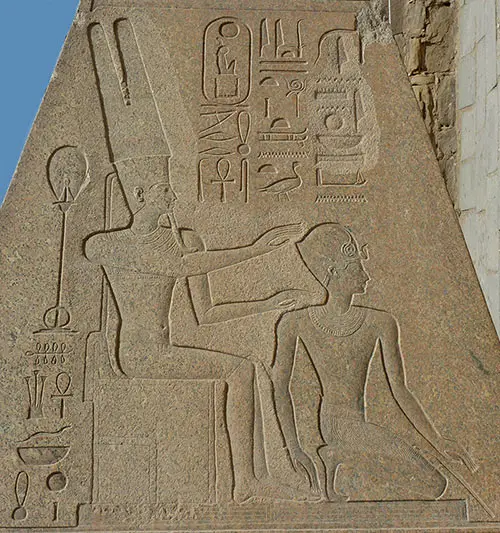
© Hannah Pethen - Hatshepsut kneeling before Amun
Culture
- The Middle Kingdom is considered now to be a classic period of culture, literature, and language.
- The Coffin Texts were created, to be used by ordinary Egyptians. The texts were a collection of magic spells to help guide the deceased through the underworld.
- During the Middle Kingdom, Egyptians used writing to tell stories and not just for record keeping.
- Military attacks were mounted against Nubia.
- Nomarchs ruled ancient Egyptian provinces. A feudal type of organization was developed around the Nomarchs.
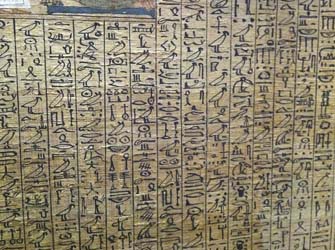
© McKay Savage - Texts from the Book of the Dead
The New Kingdom
Time Period
The New Kingdom lasted from about 1550 B.C. to 1070 B.C. and it included the 18th, 19th and 20th dynasties.
First Pharaoh
The First Pharaoh of the New Kingdom and the 18th dynasty was Ahmose. He reigned from 1550-1525 B.C. He successfully drove the Hyksos from Egypt, and also invaded Palestine and advanced into Nubia. He restored temples that had long been neglected and erected chapels in honor of his family. When he died, a prosperous Egypt was left after his reign.
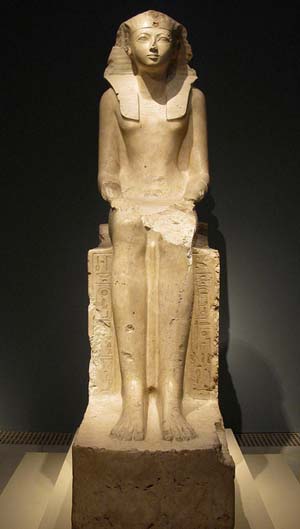
© rocor - Statue of Hatshepsut
Dynasties/Rulers
18th Dynasty Rulers:
- Ahmose
- Amenhotep I
- Thutmose I
- Thutmose II
- Hatshepsut
- Thutmose III
- Amenhotep II
- Thutmose IV
- Amenhotep III
- Amenhotep IV(Akhenaten)
- Smenkhkare
- Tutankhamun
- Ay
- Horemheb
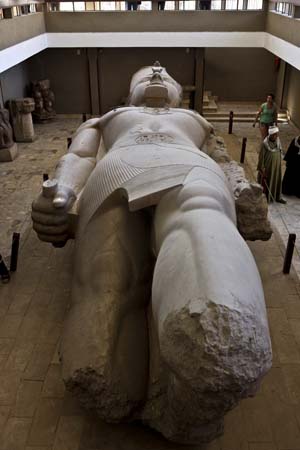
© Cliff Hellis - Ramses II, Memphis
19th Dynasty Rulers:
20th Dynasty Rulers:
- Setnakht
- Ramses III
- Ramses IV
- Ramses V
- Ramses VI
- Ramses VII
- Ramses VIII
- Ramses IX
- Ramses X
- Ramses XI
Construction & Tombs
- During the New Kingdom two types of temples were constructed: cult temples and mortuary temples. Cult temples were also called “mansions of the gods” and mortuary temples (where the dead pharaoh was worshiped) were called “mansions of millions of years”.
- The construction of pyramids stopped and pharaohs now preferred to be buried in the Valley of the Kings in rock tombs.
- Hatshepsut built her template at Deir el-Bahri.
- Amenhotep III commissioned The Colossi of Memnon.
Religion
- 19th century pharaohs were closely associated with Moses and the bible.
- Priests had power never seen before in Egyptian history. During the New Kingdom, new cult centers emerged.
- The Coffin Texts of the Middle Kingdom became the Book of the Dead in the New Kingdom.
- More and more Egyptians believed in funeral and mortuary rituals, which increased the need for protective talismans and amulets.
- During the reign of Akhenaten, Egypt became monotheistic – or ruled just one god, Aten or “sun disk”. The Armana Period, as it was called, lasted only 16 years.
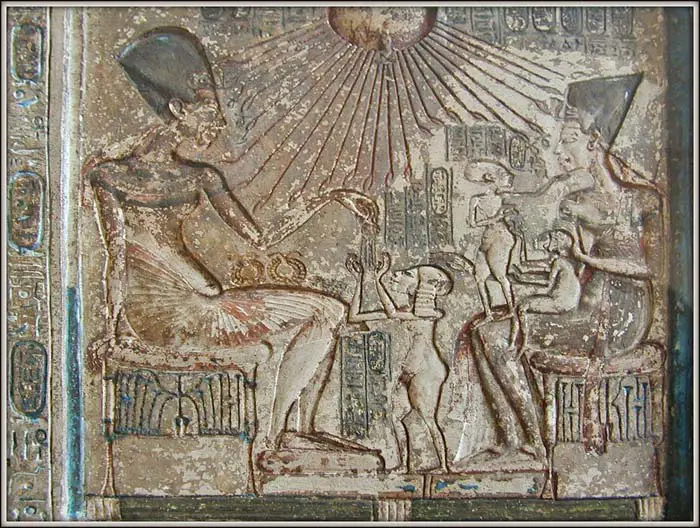
© Jean-Pierre Dalbéra - Akhenaten and his family below Aten
Culture
- The New Kingdom brought luxury, power, and wealth for Egypt.
- The eastern coast of the Mediterranean was brought under Egyptian rule after successful military campaigns were launched there.
- Egypt flourished, especially with control of the gold mines in Nubia.
- During Hatshepsut’s reign, art took on a new look. Portraits of men and women became more feminine and even included smiles.
- While, during the reign of Akhenaten, royals were depicted with slightly built chests and shoulders, large hips, buttocks, and thighs.
Facts about the Three Kingdoms
- During the Old Kingdom, pharaohs were buried in pyramids. The Middle Kingdom saw pharaohs buried in hidden tombs. In the New Kingdom they were buried in the Valley of the Kings.
- The Old Kingdom was known as the “Age of Pyramids”, the Middle Kingdom was known as the “Golden Age”, and the New Kingdom was known as the “Imperial Age”.
- Turquoise and copper were mined during the Middle Kingdom.
- Before and directly after the New Kingdom were the three distinct Intermediate Periods.

